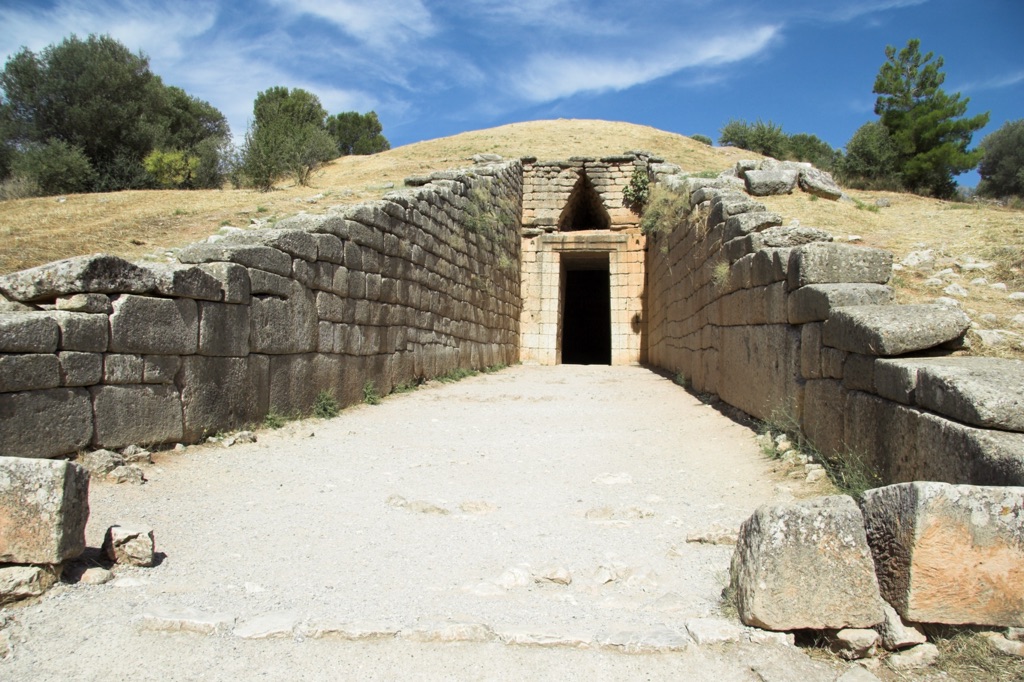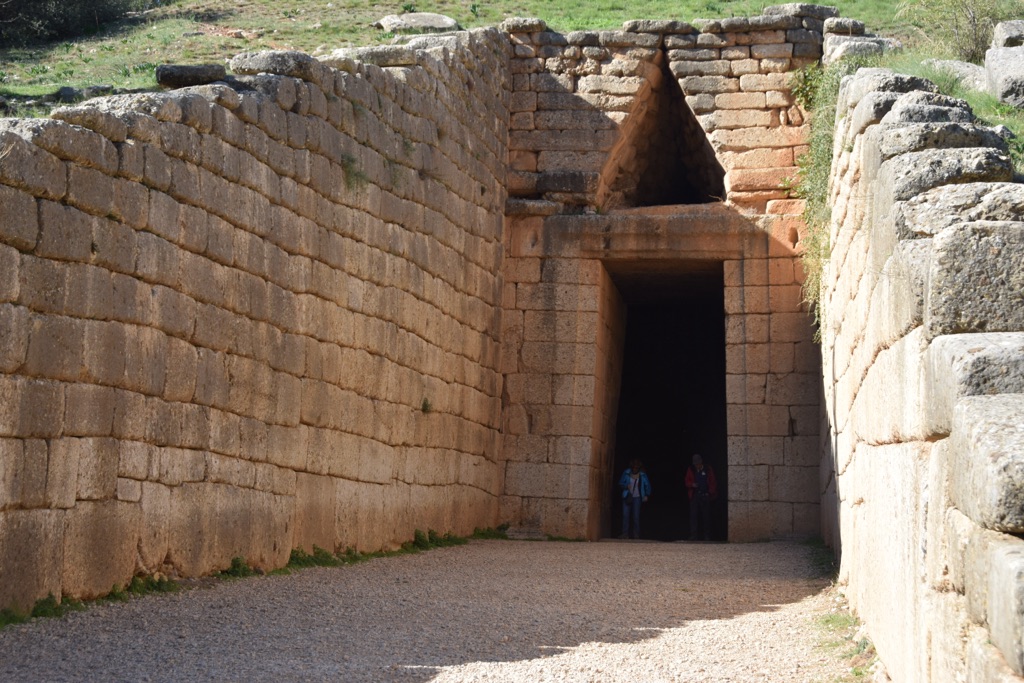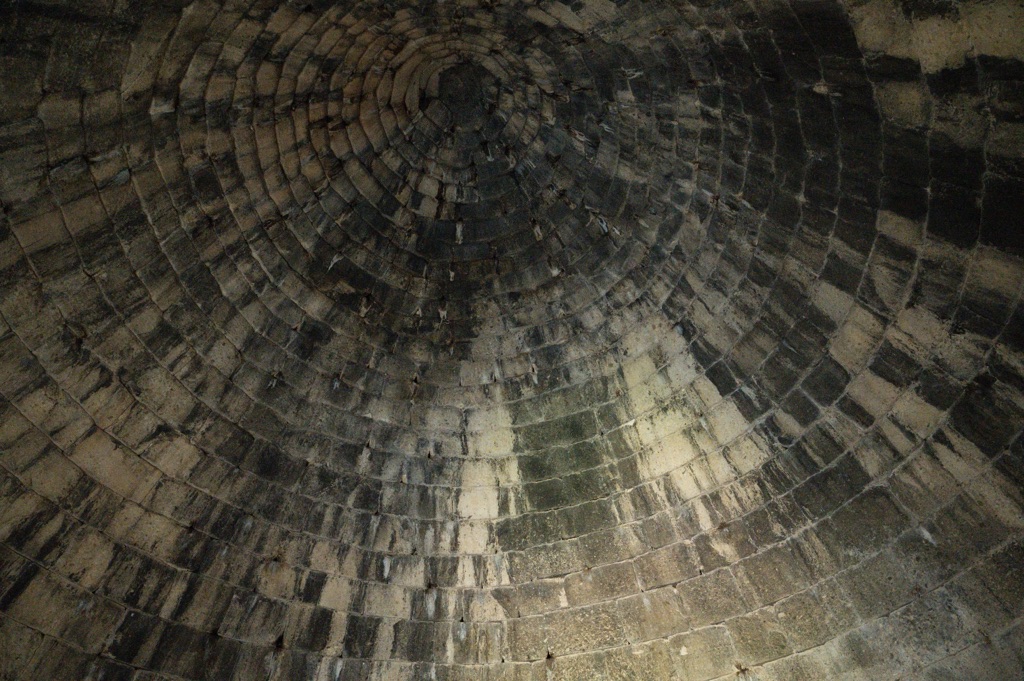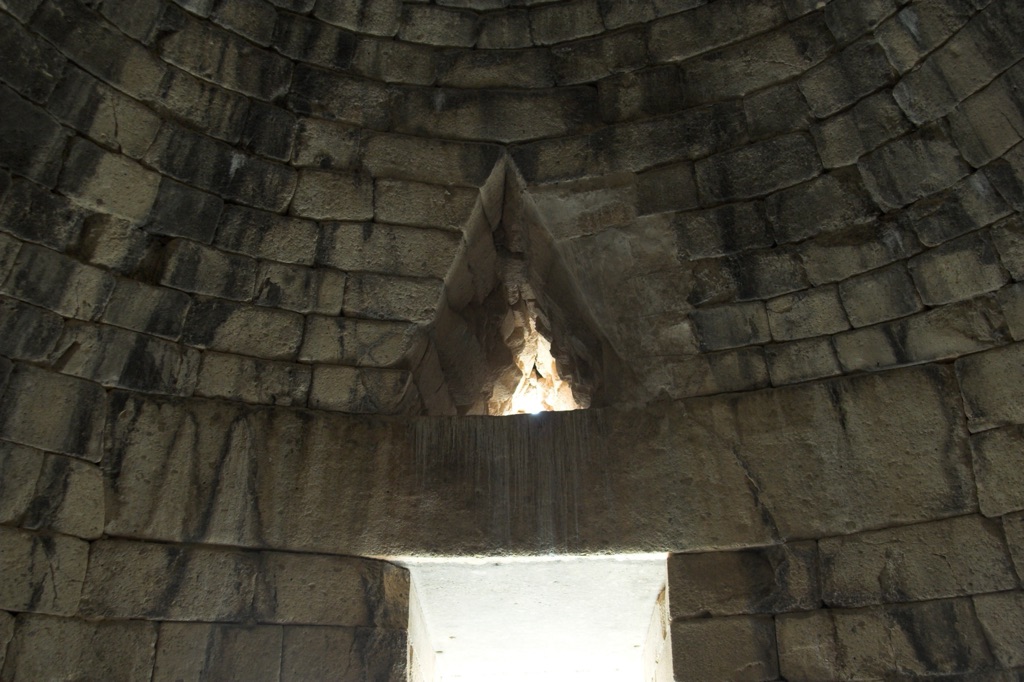The Treasury of Atreus, also known as the Tomb of Agamemnon, is a monumental structure in Mycenae, Greece. It’s one of the most impressive tholos tombs found in the region, dating back to the Bronze Age. This beehive-shaped tomb was constructed during the zenith of the Mycenaean civilization, around 1250 BC. It’s renowned for its grand dome, the largest known in the ancient world until the Pantheon in Rome was built. The Treasury of Atreus is a masterpiece of ancient engineering and architecture, showcasing the sophistication of Mycenaean culture.
Get your dose of History via Email
Historical Background of the Treasury of Atreus
The Treasury of Atreus was unearthed in 1879 by the archaeologist Heinrich Schliemann. Schliemann, who also discovered the site of ancient Troy, was a pivotal figure in the field of archaeology. The tomb’s construction is attributed to the Mycenaeans, a civilization that thrived in the late Bronze Age. The Mycenaeans were known for their advanced art, architecture, and military prowess. The Treasury of Atreus, though named after the legendary king Atreus, was not his resting place. Instead, it was likely built for a powerful Mycenaean ruler.
After its initial use as a tomb, the site’s history is shrouded in mystery. There’s evidence that it was looted in antiquity, which is common for tombs of such grandeur. The structure itself, however, has stood the test of time. It has not been the scene of any historically significant events in modern times, but it remains an important archaeological site. The Treasury of Atreus offers insights into the Mycenaean civilization and their burial practices.

The tomb’s builders remain anonymous, but they were undoubtedly skilled artisans. The precision with which the stones are fitted together in the dome is remarkable. The tomb was an engineering marvel of its time, reflecting the power and wealth of its occupant. The Mycenaeans left no written records explaining the tomb’s construction, but their legacy is etched in stone.
Over the centuries, the Treasury of Atreus has captivated the imagination of many. It has been studied extensively by archaeologists and historians, each trying to piece together its past. While the tomb itself was not inhabited, the site of Mycenae was occupied for centuries. The city’s ruins, including the tomb, provide a window into the Mycenaean age.
The Treasury of Atreus has not been directly linked to any specific historical events beyond its use as a tomb. However, its construction reflects the broader historical context of Mycenaean Greece. This period was marked by significant architectural advancements and cultural development. The tomb stands as a testament to the sophistication and complexity of Mycenaean society.

About the Treasury of Atreus
The Treasury of Atreus is an architectural wonder, built without the use of mortar. Its walls consist of carefully cut stone blocks, stacked in a conical shape to form a beehive-like structure. The tomb’s entrance, known as the dromos, is a long, walkway bordered by stone walls. This leads to the tomb’s main chamber, which is topped by a corbelled dome.
The dome of the Treasury of Atreus is its most striking feature. With a height of over 13 meters and a diameter of about 14.5 meters, it was the largest dome of its time. The stones used in the dome’s construction decrease in size as they ascend, a technique that contributes to the stability of the structure. The tomb’s builders achieved this without modern tools or technology, which is a testament to their skill.
The entrance to the tomb is framed by a massive lintel stone, estimated to weigh around 120 tons. Above it sits a relieving triangle, designed to redistribute the weight from the lintel and prevent the entrance from collapsing. The decoration of the tomb was once rich and elaborate, with red and green stones adorning the facade, though much of this has faded over time.
Inside the tomb, the main chamber connects to a smaller side chamber. This was likely where the body or bodies were placed, along with grave goods that have since been looted. The construction of the Treasury of Atreus required advanced knowledge of geometry and stonemasonry, indicating a high level of sophistication in Mycenaean society.
The building materials for the Treasury of Atreus were sourced locally. The Mycenaeans used limestone, which was abundant in the region. The precision with which the stones were cut and placed is still visible today, despite the passage of over three millennia. The tomb’s architectural highlights, such as the relieving triangle and the corbelled dome, have influenced subsequent architectural designs in the ancient world.

Theories and Interpretations
Several theories exist about the Treasury of Atreus, particularly regarding its purpose and the identity of its occupant. While it is widely accepted as a royal tomb, some scholars have proposed that it may have served a dual purpose, perhaps also as a place of worship or a treasury. The absence of inscriptions makes it difficult to determine the exact use of the tomb.
The name ‘Treasury of Atreus’ is a misnomer, as there is no concrete evidence linking the tomb to the legendary king Atreus. The association with Atreus is likely due to the tomb’s grandeur, which led early explorers to assume it belonged to a great king mentioned in Homeric epics. The actual occupant remains unknown, though it was certainly someone of high status.
There are mysteries surrounding the tomb, such as the exact method used to construct the dome and the significance of its architectural elements. Some interpretations suggest that the tholos tombs, including the Treasury of Atreus, were designed to represent the cosmos or the underworld. These interpretations, however, are speculative and not universally accepted.
Historical records from the Mycenaean period are scarce, so matching the tomb to specific events or individuals is challenging. Archaeologists have relied on artifacts found within the tomb and comparative dating to estimate its age. The construction techniques also provide clues to the tomb’s origins and the society that built it.
Dating of the Treasury of Atreus has been carried out using pottery styles and radiocarbon dating methods. These have helped establish the tomb’s construction date around 1250 BC. The dating aligns with the period of Mycenaean prosperity, just before the decline of their civilization.

At a glance
Country: Greece
Civilization: Mycenaean
Age: Approximately 3,250 years old (circa 1250 BC)
Conclusion and Sources
Reputable sources used in the creation of this article:
- Wikipedia: https://en.wikipedia.org/wiki/Treasury_of_Atreus
- Britannica: https://www.britannica.com/topic/Treasury-of-Atreus
- UNESCO World Heritage Centre: https://whc.unesco.org/en/list/941
